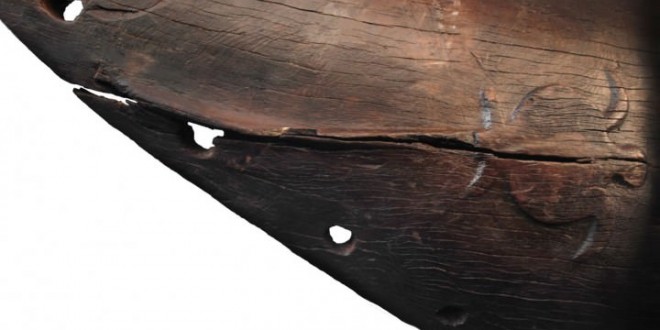A 600-year-old canoe, pulled from a sand dune on New Zealand’s South Island, may help scientists further understand the seafaring technologies of the Polynesian peoples. The canoe, which was discovered two years ago near the Anaweka estuary, is a rare find, as due to their wooden construction many such craft rapidly decay, and are lost to the ages.
According to two studies published in the journal Proceedings of the National Academy of Sciences, favorite winds and sophisticated oceangoing canoes might have helped them reach New Zealand. The canoe emerged from a sand ridge after a storm. The preserved remains of the canoe had a turtle carved on its hull. Turtles featured widely in rituals and art throughout Polynesia. Scientists said the 20-foot long hull was carved from a single timber.
The shipwreck is one of the two canoes that date back to such an early period. Another one was found about 30 years ago in the Society Islands. Though they were discovered about 2,500 miles away, the two canoes share some design elements, and are believed to be from the same time period. Scientists said they could have come from the “same design tradition.”
The newly found boat helped researchers understand the sailing technology that allowed Polynesians to brave the winds and waters. Dilys Amanda Johns of the University of Auckland and lead author of the study said she had never seen anything like that. Radiocarbon dating techniques revealed that the canoe was built around 1,400 AD. Analysis of the shipwreck suggested that it was about 45.9 feet long when it was whole.
Wind patterns favored travel to New Zealand
Since Polynesians traveled against the wind patterns, researchers believe they would have needed pretty high-tech canoes to navigate the extreme conditions. Another team of researchers led by Ian D. Goodwin of Macquarie University in Sydney published their study in the same journal. Goodwin and his colleagues created the “paleoclimate” model in 20-year increments. It showed that winds favored long-distance travel during key periods.
Goodwin said wind patterns favored sailing from East Polynesia to New Zealand between 1140-1260 AD, and sailing to Easter Island between 1250-1280AD. The two papers don’t match up timing-wise. The first study led by Johns says the canoe dates back to 1400. But Goodwin’s paper suggests that the window to New Zealand travel closed before 1300 AD. Anyway, Johns said closing of such wind windows probably didn’t stop the Polynesians.
Agencies/Canadajournal
 Canada Journal – News of the World Articles and videos to bring you the biggest Canadian news stories from across the country every day
Canada Journal – News of the World Articles and videos to bring you the biggest Canadian news stories from across the country every day



